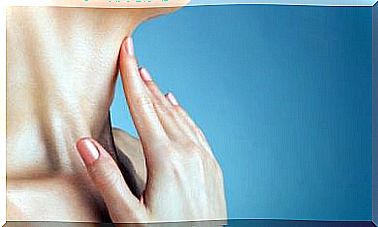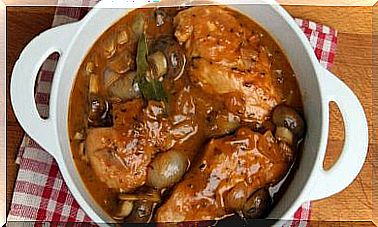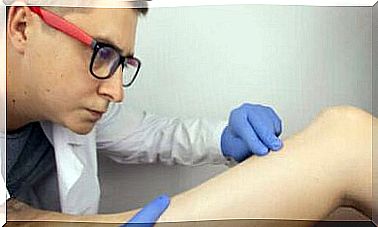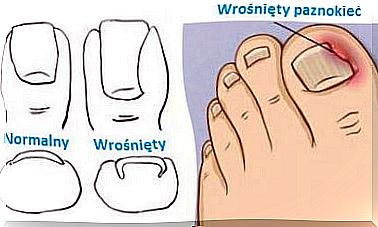Hyoscine: Uses And Side Effects

Hyoscine is a medicine also known by other names such as scopolamine or hyoscine butylbromide. It relieves abdominal pain and discomfort, menstrual cramps and other spasmodic digestive ailments.
For decades, hyoscine has been one of the most common treatments for renal colic, either alone or with metamizole.
Keep in mind that hyoscine is not a pain reliever like NSAIDs – its purpose is to avoid the cause of the pain: the muscle spasms themselves.
For this reason, hyoscine is an antispasmodic drug. It is an alkaloid found in some Duboisia plants, such as Duboisia myoporoides.
How does hyoscine affect the body?
Salts derived from hyoscine, such as hyoscine butylbromide, are an anticholinergic drug with high affinity for muscarinic receptors. They are found in smooth muscle cells in the digestive tract.
When this drug reacts with the receptors, hyoscine has a spasmolytic or diastolic effect. It can also bind to nicotinic receptors, causing a ganglion blockade.

Hyoscine uses
Below we will show you the different uses of hyoscine as well as its dosage:
- Treatment of peptic ulcers: In children and adults over 12 years of age, take 20 mg up to 4 times a day. For children from 6 to 12 years of age, reduce the dose to 5-10 mg to 3 times a day. Finally, infants and children under 6 years of age can take a dose of 0.3-0.6 mg / + kg 3 to 4 times a day. The maximum is 1.5 mg / kg.
- Antispasmodic : Adults take 20 mg by mouth up to 4 times a day.
- Complementary for Irritable Bowel Syndrome and other gastrointestinal disorders: As with the previous application, adults take 20 mg orally up to 4 times a day.
Pharmacokinetics: What Happens to Hyoscine in the Body?
Pharmacokinetics includes the processes of absorption, distribution, metabolism and excretion of the drug. In this sense, hyoscine is an oral drug with low bioavailability. In other words, this is the percentage of the drug available at the time of insertion after taking a full dose. Only 1% of the oral dose reaches the circulation.
However, this does not include the effects on the muscarinic receptors in the gastrointestinal tract. Here the drug works locally. Moreover, hyoscine does not cross the blood-brain barrier. Therefore, there is no cholinergic effect on the central nervous system.
Side effects

Like all drugs, hyoscine also has side effects. According to the Spanish Agency for Medicines and Health Products, they should not be underestimated.
Side effects are all the undesirable symptoms that arise while taking the drug. Here are the most common side effects of hyoscine:
- Constipation
- Dry mouth
- Difficulty passing urine
- Nausea
- Dizziness
- Blurred vision
On the other hand, although they are not very common, the Collaborating Center of the National Administration of Medicines, Food and Medical Technology of Argentina states that hypersensitivity reactions can occur along with some of the following symptoms:
- Itch
- Hives
- Nausea and vomiting
- Breathing difficulties
In fact, all of these symptoms may require immediate medical attention. In the event of their occurrence, consult a doctor as soon as possible.
Always consult professionals
Hyoscine is an anticholinergic drug that heals the gastrointestinal, genitourinary and bile ducts. Despite its low bioavailability, after oral administration it has a high tissue affinity for smooth muscle muscarinic receptors. This seems to explain the relatively few side effects.
However, it should be remembered that in some cases the side effects can be serious and require immediate medical attention. Therefore, before taking hyoscine, it is worth talking to your doctor about its use.









